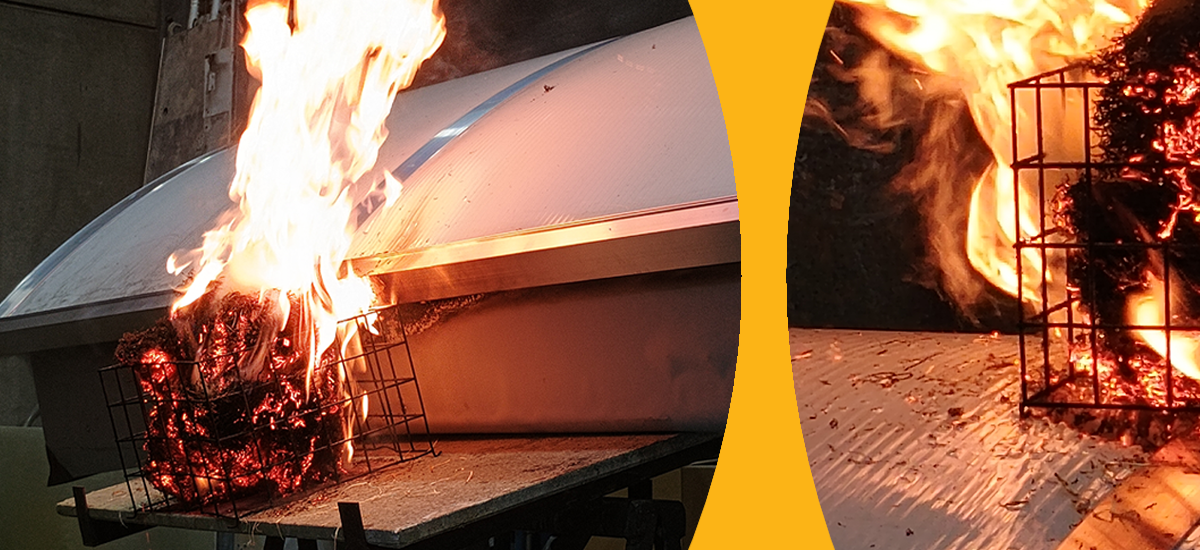26/8/2025
What happens to the products on my roof if my neighbour’s barbecue gets out of hand?
Manufacturers of roof mounted products increasingly want to know what happens to their materials when exposed to an external fire. They can find the answer to this question by conducting an external fire exposure test.
Test procedure
An external fire exposure test is carried out in accordance with the CEN/TS 1187:2012 standard. Four specimens are mounted on a 15 or 45 degree angle to determine their behaviour when exposed to fire. This test is carried out by placing a basket on the test piece. The location of the basket varies per product and depends on the application and the structure of the product and the underlying layers. The dimensions of the basket are 30x30x20 (L x W x H in cm) and is filled with 600 grams of wood wool to ensure each product is exposed to the same fire load.
The test starts by igniting the basket. The basket has an average burning time of 5 minutes. An external fire exposure test usually takes 1 hour, after which we allow the test piece to cool for half an hour when necessary. The duration is dependent on the performance of the specimen.
Varying products
The products for which an external fire exposure testis relevant vary greatly; from thatched roofs to solar panels and from skylights to sandwich panels. The only parallel between these products is that they are mounted on top of a building.
The pictures displayed above the article are from a test for polycarbonate skylights. For this test in collaboration with Bright Light bv, research was conducted into the penetration and flame spread of the skylights and the edge below. We tested the product five times in four different positions: twice against the front of the product (photo on the right), once on the front of the product (photo on the top left), once in the center on top of product (photo on the bottom left) and once on the left half on top of the product. After these tests, it was concluded that the product meets the requirements for the Broof (t1) certificate and may be used on various roofs.
Efectis has been conducting external fire exposure tests that meet the requirements of the Dutch Accreditation Council for several years and is therefore ISO 17025 accredited for Broof (t1). The versions Broof (t3) and Broof(t4) are also performed by the French and UK branch of Efectis under accreditation (respectively COFRAC and UKAS).
Would you like to know more about external fire exposure tests or would you like to test your product using this method?
For more information, please contact Suzanne van Herp or Bauke Knottnerus.

